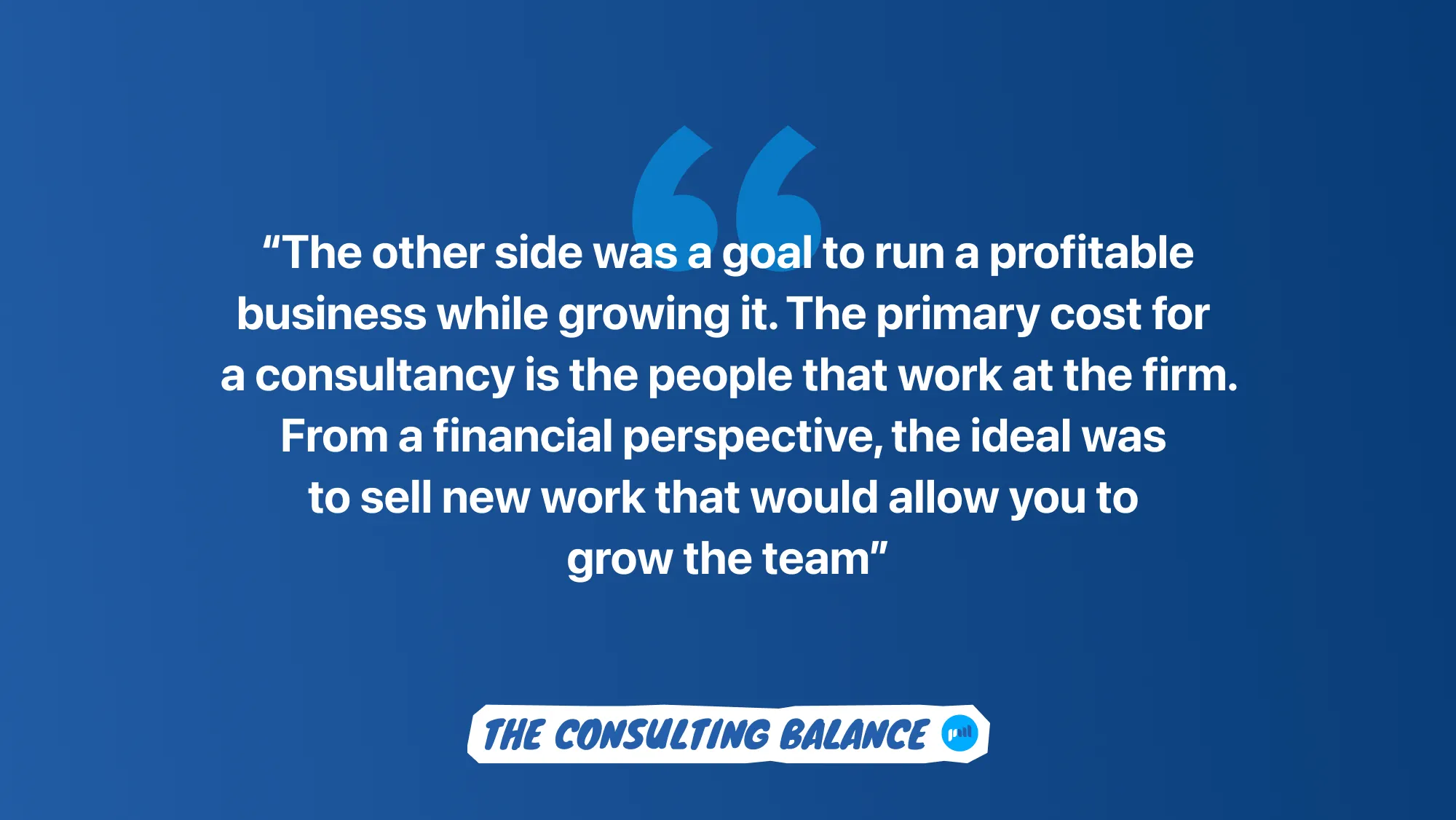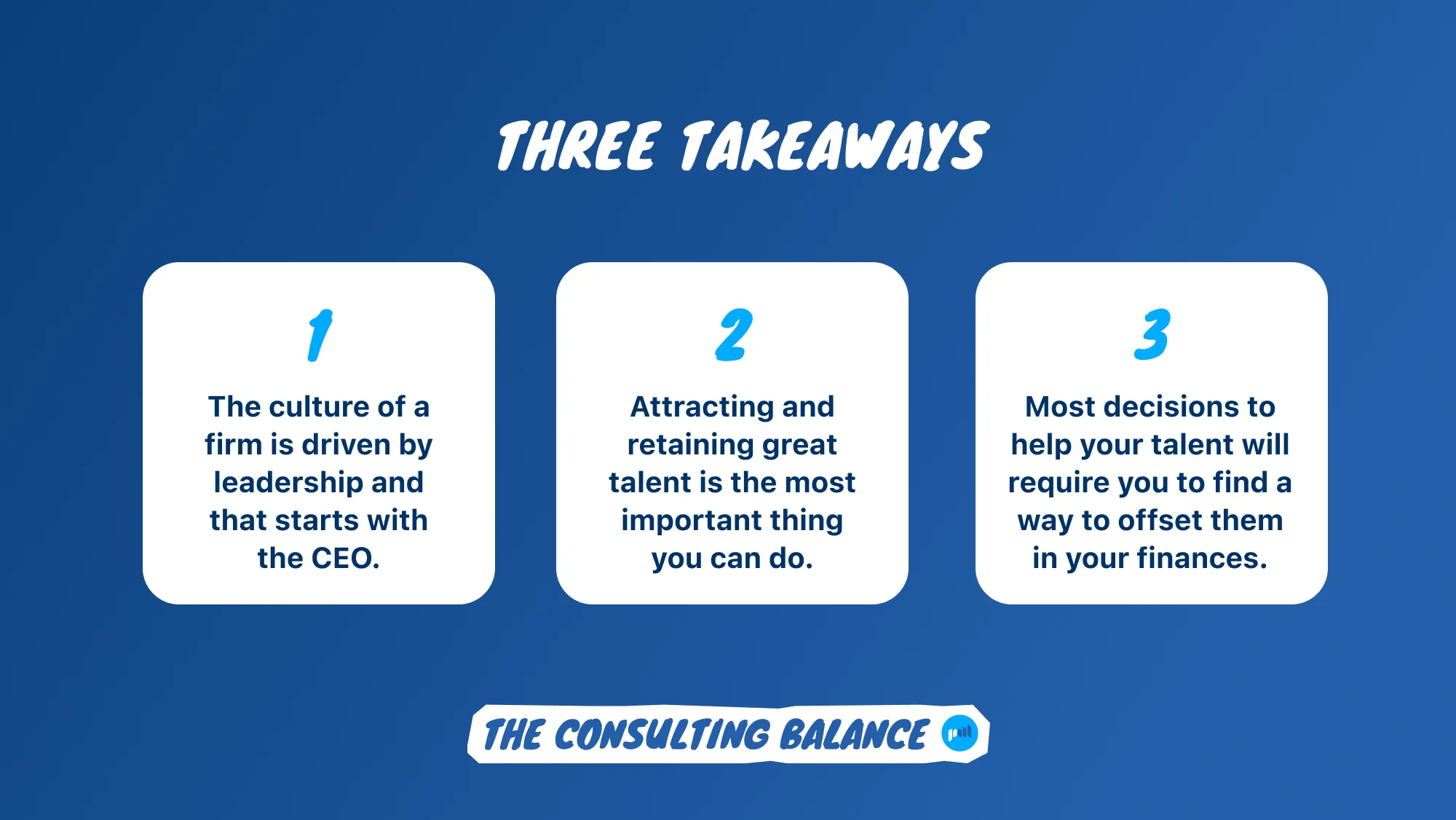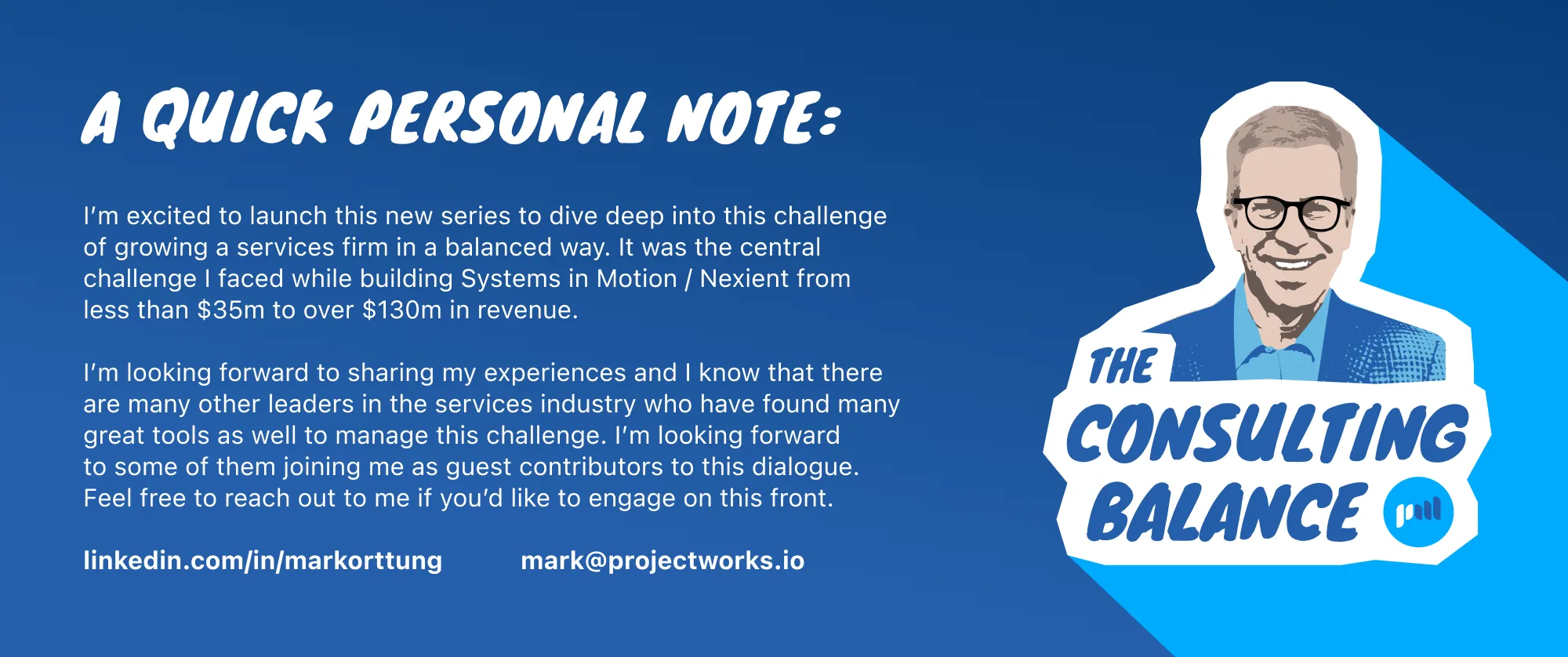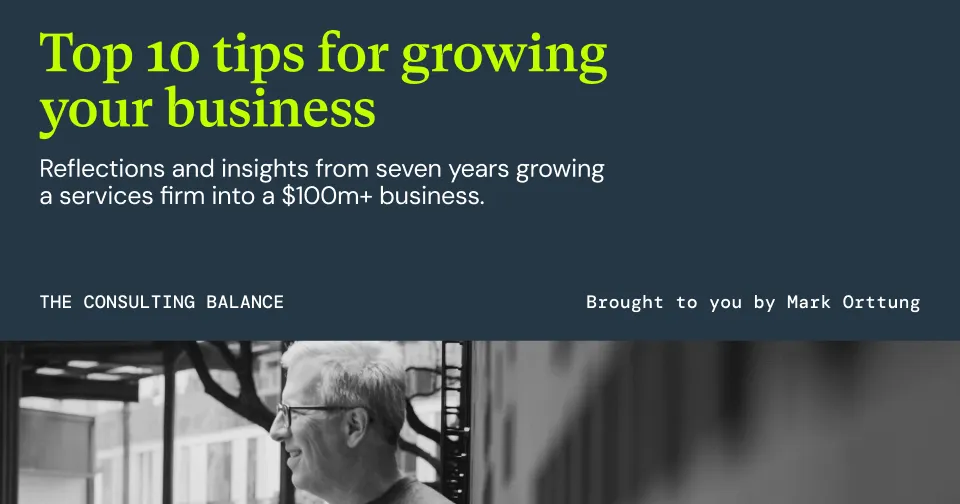Balancing revenue and talent – the hardest problem in services

Hear how two conflicting objectives would challenge Mark for the next seven years.
“Cancel the engineering manager’s offer letter.” The statement came out so quickly and matter of factly that I almost didn’t stop the meeting to ask what was happening.
In 2014, I was in my first few weeks as CEO of what was then called Systems in Motion. I was in a weekly meeting that most of the leadership of the company would join to go over our new projects and staffing assignments. As a newcomer, it was a chaotic meeting, but was clearly central to how the company ran.
I had the curiosity / presence to stop the meeting and ask what that statement meant. Had we offered someone full-time employment? (yes) Had they already quit their current job based on our offer? (yes) So I interjected, “Don’t cancel the offer.” There was a shocked silence in the room. I had clearly just done something that broke from the norms here.
It took me a while to really appreciate the two conflicting objectives that would challenge me for the next seven years as I ran a product development consultancy.
On the one side, I had just finished working in four software startups where great talent was something you went way out of your way to attract and retain. In my mind, you simply couldn’t renege on an offer after someone had given notice at their current position. That is a story that would travel throughout the community of developers and you would never be able to attract great talent.

The other side was a goal to run a profitable business while growing it. The primary cost for a consultancy is the people that work at the firm. From a financial perspective, the ideal was to sell new work that would allow you to grow the team and to hire new employees that start at the same time as the new project. Hire them too soon and they’ll sit on the “bench” and hurt your bottom line. Hire them too late and you can’t start your new projects on time and your clients become unhappy.
An underlying positioning challenge
There was another theme playing out here that I felt in my gut, but couldn’t articulate for a few more months. The culture of the company at the time was one of running a labor arbitrage. In our case, while we were 100% US in our workforce, most of the engineering talent was in Ann Arbor, MI. In 2014, salary ranges for engineers were still regional and we could sell development work in California or New York and deliver it from Michigan in a lower cost way. While we touted the quality of our work (it was good), many clients bought from us for the cost savings and we had an internal culture that focused on costs over recruiting top talent. I wanted to move the company to a premium play – getting people to buy from us because our offering was better than anyone else’s. I had no idea how to do that yet, but I knew that attracting and retaining great talent would be key.
Zooming out to 2024 and how to apply this to your services firm:
- The culture of a firm is driven by leadership and that starts with the CEO. People will pay way more attention to your actions than to your words. Reversing the decision to rescind the offer that day kicked off our new culture.
- In a services firm, attracting and retaining great talent is the most important thing you can do, especially when the firm is young and you are still building your methodology and reputation in the market. Clients will select your firm and stay with your firm based on the strength of the team and their work product.
- Most decisions you make to help your talent will require you to find a way to offset them in your finances. I spent a significant amount of my time working on maximizing our revenue generation engine so that we’d have the finances to be able to attract and retain key talent.

Paving the way
So with my simple gut reaction, I started several things in motion. First, people realized I was going to make changes in the culture (although where we’d take that wasn’t yet clear to me or them). Second, I had signed up to a financial problem (I was now going to carry this new, relatively expensive person on my bench, hurting the bottom line). I would spend the next seven years working on all the aspects of how to balance the growth of the firm.


.webp)
